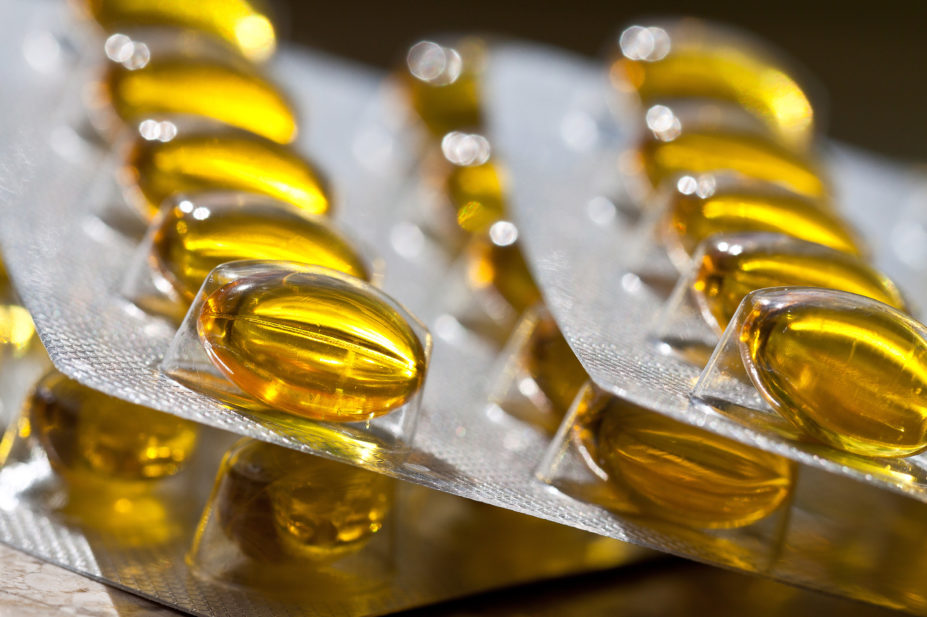
Shutterstock.com
Plants are not the only organisms that can photosynthesise. In fact, there is a hormone so important to our bodies that, with enough sunlight, we can produce it ourselves — vitamin D. Affectionately called the sunshine vitamin, the hormone is essential to our bone and muscle health, and it could protect us from disease and ill health too.
But sunshine is something many of us will have had little exposure to in the past year. At the time of writing, rising COVID-19 cases have once again confined millions of people across the UK to their homes, permitted to leave only for essential reasons. Exercise outdoors, for example, is limited to just once a day — leaving a very small window for catching the UVB rays our bodies need to produce vitamin D.
Worse still, we’re not able to synthesise vitamin D from sunlight in the winter, when the UK’s position far from the equator means the days are short, and the sun is low in the sky. Some foods can provide the vitamin (such as oily fish, red meat, egg yolks or fortified foods), but it is hard to meet our needs from diet alone.
It is for this reason that, since 2016, everyone in the UK has been advised to take a daily supplement of 10 micrograms — equating to 400 international units — of vitamin D during the winter, and why those with darker skin tones, who have a greater risk of vitamin D deficiency, have been advised to supplement all year round[1]. Those who are shielding are particularly at risk of deficiency during the pandemic. That is why, in November 2020, the UK government announced that 2.7 million vulnerable people, including care home residents, would be offered a four-month supply of vitamin D supplements because “these groups have spent more time indoors this year[2]”.
But care home residents have always been considered to be at particular risk of vitamin D deficiency because of their lifestyles and, for more than 30 years, government nutrition advisory committees have recognised this and recommended vitamin D supplements for older people living in care homes.
This problem was around before the pandemic, so why is action being taken only now? Why were care homes not on track with vitamin D already? Our research in care homes has found that vitamin supplements tend to be perceived as medicine, rather than as food; and it’s unclear who the responsibility for this preventative measure belongs to. This confusion means many residents are falling down the gap and into vitamin D deficiency[3].
So here is what all health and care professionals need to know about vitamin D, vitamin D supplements in care homes and how we can better protect care home residents.
2020 and vitamin D
Vitamin D is essential for healthy bones and muscles, but it could also play a role in many other ways, including improving cardiovascular health, immune function and resistance to infections[4]. Infections such as COVID-19, perhaps. In 2020, as we learnt more about the virus, a possible link between vitamin D status and disease outcomes began to emerge[5]. However, in June 2020, rapid reviews in the UK concluded there was insufficient evidence to support taking vitamin D supplements for prevention of the virus[6].
But since then, evidence is growing that low vitamin D status may increase susceptibility to, and severity of, COVID-19, and further reviews are under way[7–9]. For example, research from Spain suggests that more than 80% of patients hospitalised with COVID-19 have a vitamin D deficiency[10]. This is not surprising: we know malnutrition and infection are linked.
Where is it going wrong?
During this pandemic, some of our most vulnerable live in care homes, where they are recommended to take daily vitamin D supplements of 10 micrograms throughout the year to stop their vitamin D levels falling in the winter or during times when they have no exposure to the sun[4]. There are similar recommendations across Europe and the United States, but vitamin D deficiency is still widespread in care homes across these regions[11,12]. While there is little data to create a clear UK picture, studies from Austria, Belgium, Germany and Sweden have found almost all residents to be vitamin D deficient[3].
Our research — undertaken in 2018, before the pandemic — set out to find out what was (or was not) happening. We conducted 13 interviews with members of care home staff, GPs, public health professionals and others involved in the care sector in two areas of southern England. We analysed our transcribed interviews and found four main themes[3].
The first was a clear medical framing of vitamin D — care home staff understood vitamin D sufficiency to be a medical issue and understood vitamin D supplements to be medicines and, therefore, the responsibility of GPs. Vitamin D was given usually on an individual basis: GPs tended to prescribe the supplements in response to falls or fractures, or following a diagnosis of vitamin D deficiency or osteoporosis. None of the interviewees were aware of any care home where the supplements were given routinely as a public health measure. “There’s no kind of protocol or carpet/universal plan to prescribe vitamin D supplements to patients of ours at care homes,” said one GP.
The second major theme was professional and sectoral boundaries. Care home staff did not feel vitamin D status was part of their job. One staff member said: “We’re only carers. How would I know that somebody needs vitamin D?” Staff were not confident in giving residents vitamin D supplements unless they were prescribed by a doctor: “The trouble is we’re very highly regulated against … we can’t just decide to give people a supplement.” There was also little awareness of the recommendation that all care home residents should be given vitamin D — some GPs and care home managers incorrectly suggested that if the diet the care home provides is reasonable, vitamin D should not be a problem.
The third theme was lack of clear guidance on supplementation. One care home manager said: “I would never even think about a resident having vitamin D or why they haven’t got vitamin D.” Meanwhile a public health professional said: “We haven’t taken it forward because we’re not clear … what the message would be. Is it that every older person should be taking vitamin D? I’ll see one thing saying ‘yes’ and then another saying ‘well, not really’.”
The final theme related to practical and ethical issues. These included worries about the burden of more pills, and residents not having the cognitive capacity to consent to the supplements, while there are questions around how much of a difference it would make “at their age”. One care home manager said: “As far as they’re concerned, they’ve reached a certain age and have never needed it. So why do they now need it?”
Food or medicine?
All but one of the interviewees believed vitamin D supplements to be medicines, but in most countries, including the UK, vitamin supplements are regulated and sold as foodstuffs. And when nutrition and public health bodies recommend daily supplements in lieu of sunlight exposure — such as in the Scientific Advisory Committee on Nutrition’s (SACN) 2016 guidance — they also consider vitamin D supplements as a dietary source, along with other foods containing vitamin D4.
But our research found that this is not the thinking in the care sector, where vitamin D is regarded as a medicine. And although care homes are responsible for meeting residents’ nutritional needs, they are cautious about giving supplements unless prescribed by a doctor. Yet, in England, vitamin D supplements feature on the NHS’s list of items that doctors are advised not to prescribe because they can be obtained cheaply and easily over the counter[13].
There are many items on this list that patients can reasonably be expected to obtain themselves and, similarly, SACN’s vitamin D recommendations rely on personal responsibility. But care home residents have often lost their capacity to live independently, so the concept of personal responsibility is inappropriate for those living in a care home. Our study, although small, shines a light on major problems in policy and practice in this area. We urgently need a review of guidelines and regulations in England to establish who is responsible for implementing public health recommendations for our residential care home residents.
When the supplies dry up
For now, the government’s decision to give care homes in England a four-month supply this winter has been an important development, but very soon these supplies will have run out. What happens then? We are calling on the government to turn the temporary universal supplementation with vitamin D for care home residents into a mainstream practice. At high street prices, a year’s supply of vitamin D supplements costs around £15 per person, but it is unknown just how much the NHS could save in improved vitamin D sufficiency.
We should look to New Zealand, which has had a publicly funded, universal vitamin D supplementation programme for care homes since 2011[3]. In 2014, a review of the programme found that 75% of care home residents took the supplements, and almost all those taking them had a healthy vitamin D status[3,14].
What pharmacists can do
As spring approaches, and winter supplies run out, there are things healthcare professionals, including pharmacists and pharmacy technicians, can do to help prevent vitamin D deficiency in older people:
- Support adult social care colleagues by giving expert advice and guidance on the necessity and safety of daily supplementation with 10 micrograms of vitamin D;
- Promote winter vitamin D for all, not just for care home residents — and particularly for people who are housebound, shielding or have been hospitalised for long periods;
- Draw attention to the vitamin D supplement recommendation;
- Be aware that the ‘nutrient reference value’ (NRV) for vitamin D,
- used on nutrition labels, is 5 micrograms, so a supplement labelled as providing 100% NRV provides half of the government’s recommendation for a preventative daily dose[15];
- Explain why it is important to supplement in the UK — which is because our winter sunshine is weak and, unlike many other countries in the Northern hemisphere, there is no national programme to fortify our foods;
- Lobby to keep vitamin D and care homes on the policy agenda, nationally and locally, until the problem is resolved.
The COVID-19 pandemic has shown us how the nutrition of some of our most vulnerable people has been neglected. Now that the government has recognised the issue — and has taken short-term action to address it — it must not be swept back under the carpet.
Joseph Williams, student, Department of Medical Education, Brighton and Sussex Medical School; Carol Williams, principal lecturer, health promotion and public health, School of Health Sciences, University of Brighton
- 1PHE publishes new advice on vitamin D. Public Health England. 2016.https://www.gov.uk/government/news/phe-publishes-new-advice-on-vitamin-d (accessed Jan 2021).
- 2At-risk groups to receive free winter supply of vitamin D. Department of Health and Social Care. 2020.https://www.gov.uk/government/news/at-risk-groups-to-receive-free-winter-supply-of-vitamin-d (accessed Jan 2021).
- 3Williams J, Williams C. Responsibility for vitamin D supplementation of elderly care home residents in England: falling through the gap between medicine and food. BMJNPH 2020;3:256–62. doi:10.1136/bmjnph-2020-000129
- 4SACN vitamin D and health report. Public Health England. 2016.https://www.gov.uk/government/publications/sacn-vitamin-d-and-health-report (accessed Jan 2021).
- 5Martineau AR, Forouhi NG. Vitamin D for COVID-19: a case to answer? The Lancet Diabetes & Endocrinology 2020;8:735–6. doi:10.1016/s2213-8587(20)30268-0
- 6COVID-19 rapid evidence summary: vitamin D for COVID-19. National Institute for Health and Care Excellence. 2020.https://www.nice.org.uk/advice/es28/evidence (accessed Jan 2021).
- 7Grant WB, Lahore H, McDonnell SL, et al. Evidence that Vitamin D Supplementation Could Reduce Risk of Influenza and COVID-19 Infections and Deaths. Nutrients 2020;12:988. doi:10.3390/nu12040988
- 8Ali N. Role of vitamin D in preventing of COVID-19 infection, progression and severity. Journal of Infection and Public Health 2020;13:1373–80. doi:10.1016/j.jiph.2020.06.021
- 9Radujkovic A, Hippchen T, Tiwari-Heckler S, et al. Vitamin D Deficiency and Outcome of COVID-19 Patients. Nutrients 2020;12:2757. doi:10.3390/nu12092757
- 10Hernández JL, Nan D, Fernandez-Ayala M, et al. Vitamin D Status in Hospitalized Patients with SARS-CoV-2 Infection. The Journal of Clinical Endocrinology & Metabolism Published Online First: 27 October 2020. doi:10.1210/clinem/dgaa733
- 11Rolland Y, de Souto Barreto P, et al. Vitamin D supplementation in older adults: Searching for specific guidelines in nursing homes. J Nutr Health Aging 2013;17:402–12. doi:10.1007/s12603-013-0007-x
- 12Nutrient reference values. Australian Government National Health and Medical Research Council. https://www.nrv.gov.au/ (accessed Jan 2021).
- 13Conditions for which over the counter items should not be routinely be prescribed in primary care: guidance for CCGs. NHS England. 2018.https://www.england.nhs.uk/publication/conditions-for-which-over-the-counter-items-should-not-routinely-be-prescribed-in-primary-care-guidance-for-ccgs/ (accessed Jan 2021).
- 14MacDonell SO, Miller JC, Harper MJ, et al. Vitamin D status and its predictors in New Zealand aged-care residents eligible for a government-funded universal vitamin D supplementation programme. Public Health Nutr 2016;19:3349–60. doi:10.1017/s1368980016001683
- 15Food supplements: summary information on the labelling of food supplements. Department of Health. 2011.https://assets.publishing.service.gov.uk/government/uploads/system/uploads/attachment_data/file/204322/Supplements_Labelling_Summary_DH_FINAL.pdf (accessed Jan 2021).

